Madonna and Child between Saints Nilus and Bartolomeo by Annibale Carracci (1607)
Madonna and Child between Saints Nilus and Bartolomeo by Annibale Carracci (1607)
Couldn't load pickup availability
SKU:PRFVLD9GX7SKM
WHY BUY
- Magnificent and real colors
- It makes any room elegant
- Perfect for a prestigious gift
CHARACTERISTICS
Print on handmade paper from Amalfi
Sheet size: 30 x 42 cm
Material: work printed on very fine handmade Amalfi paper with fringed edges
Print on handmade Amalfi paper with frame
Sheet size: 30 x 42 cm
With frame: 32 x 44 cm
Material: work printed on very fine handmade Amalfi paper with fringed edges, handmade beech wood frame
Print on pictorial canvas
Measurement: 80 x 60 cm
Material: work printed on very fine grain pictorial canvas
Frame: Light brown beech wood and handmade wood pulp
DO YOU WANT INFORMATION ON THE PRODUCT? WHATSAPP CHAT WITH A CONSULTANT
The work
The Madonna and Child between Saints Nilo and Bartolomeo by Annibale Carracci (1607) is a Baroque masterpiece, preserved in the Abbey of San Nilo in Grottaferrata. The painting depicts the Madonna with Baby Jesus in a celestial setting, sitting on a throne of clouds surrounded by angels. The Madonna wears a blue mantle and a red dress, while lovingly holding the Child in her arms, who looks towards the viewer.
On the sides of the Madonna are San Nilo, on the left, and San Bartolomeo, on the right, both dressed in black monastic habit. Saint Nilo and Saint Bartholomew are depicted in an attitude of devotion and prayer, facing the Madonna and Child. Their expression is serene and contemplative, emphasizing the sacredness of the scene.
The background of the painting presents a natural landscape, with hills and trees that extend to the horizon, creating a contrast between the earthly and celestial dimensions. In the center, at the bottom, there is a decorated altar, which reinforces the idea of sacredness and worship.
The composition is characterized by a harmonious balance and a masterful use of light, which illuminates the faces of the saints and the Madonna, giving a sensation of spirituality and transcendence. Carracci demonstrates his ability to combine realism and idealism, making the scene deeply emotional and engaging.
How reproductions are made
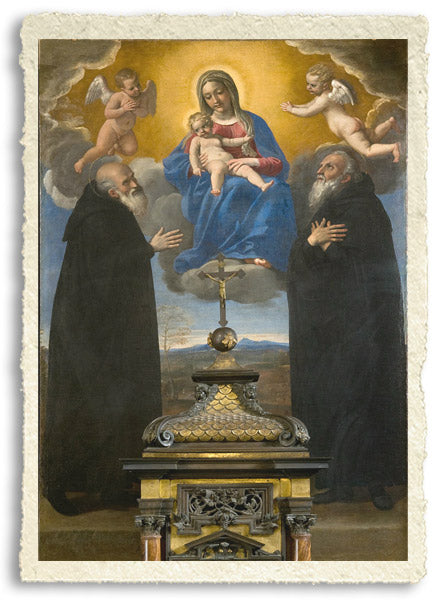
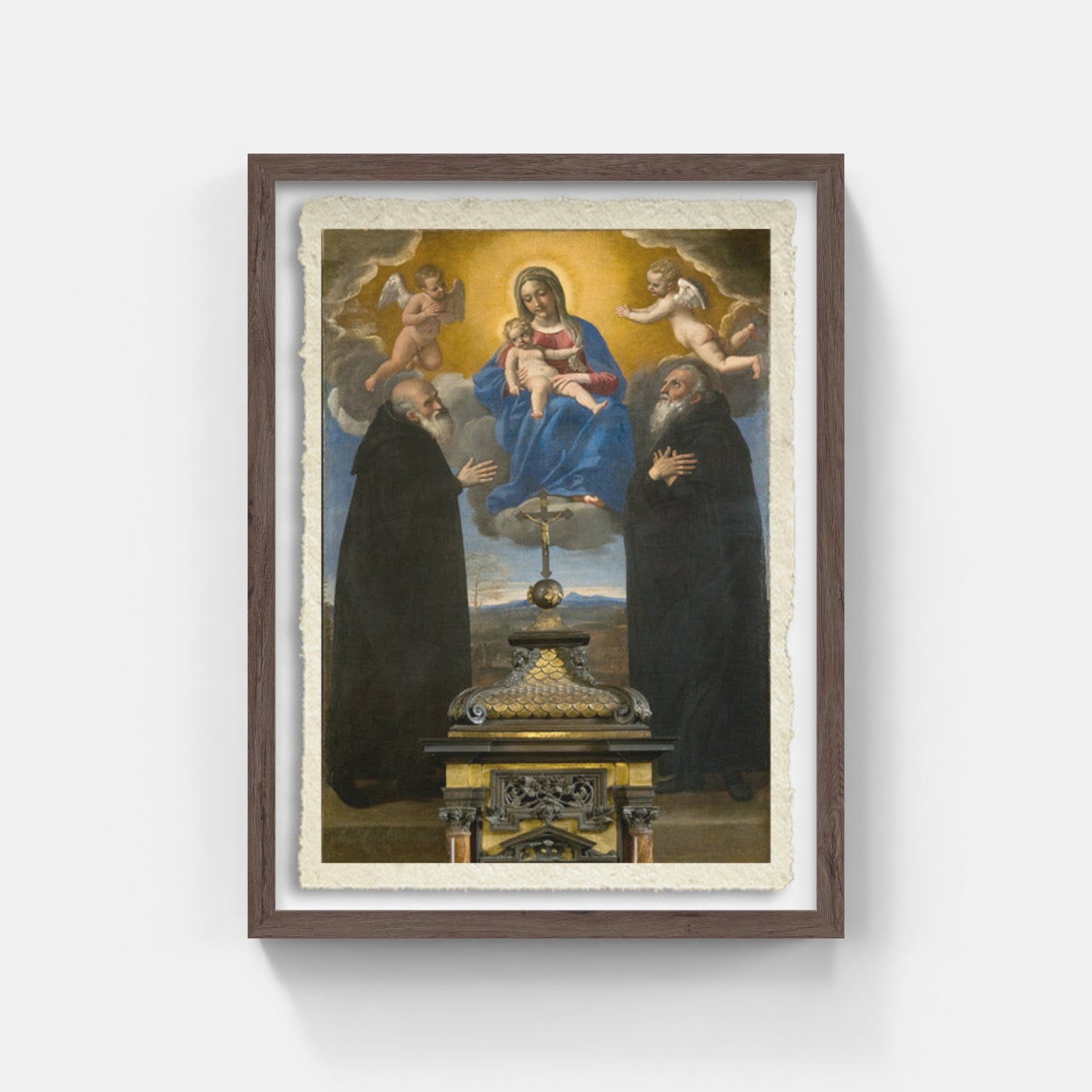
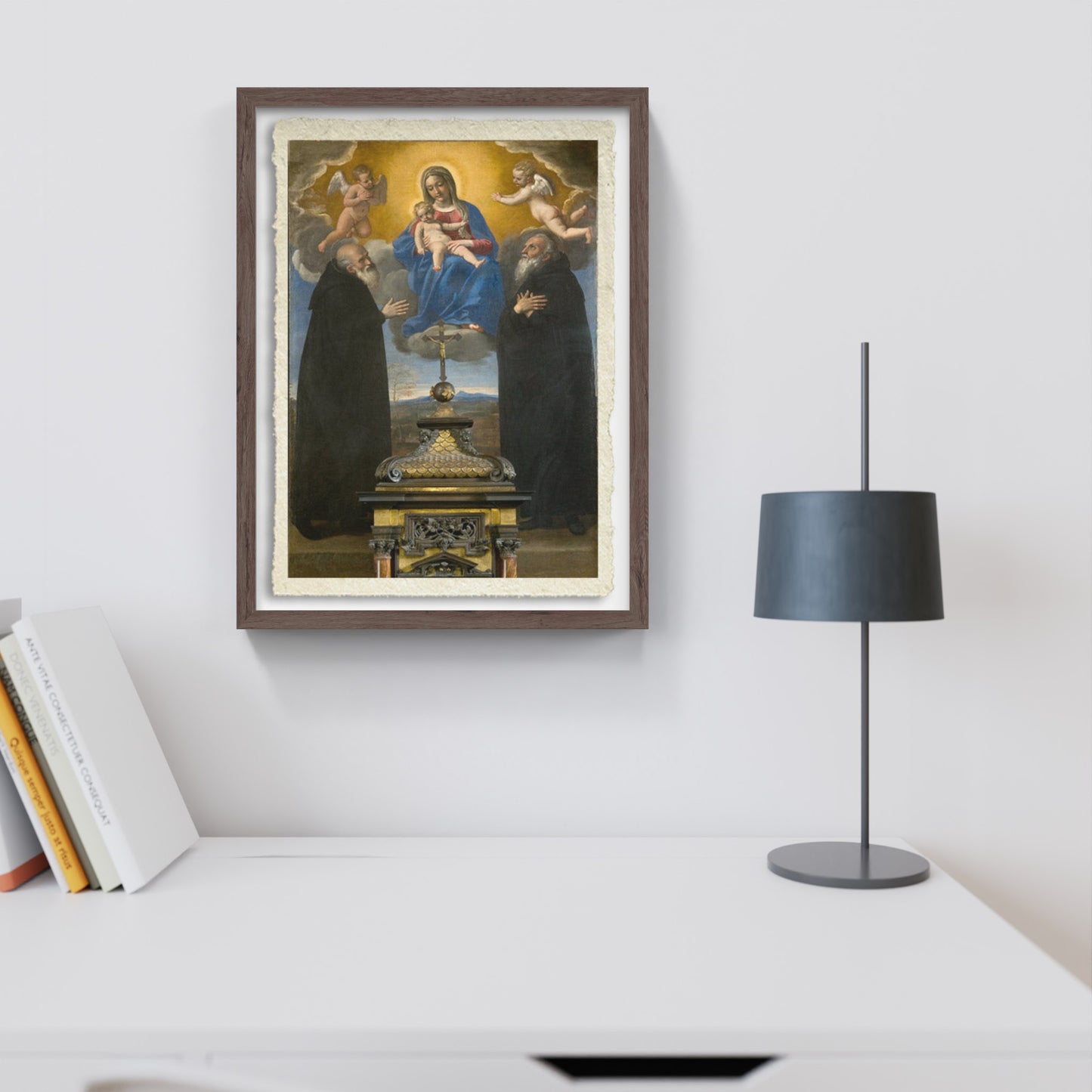
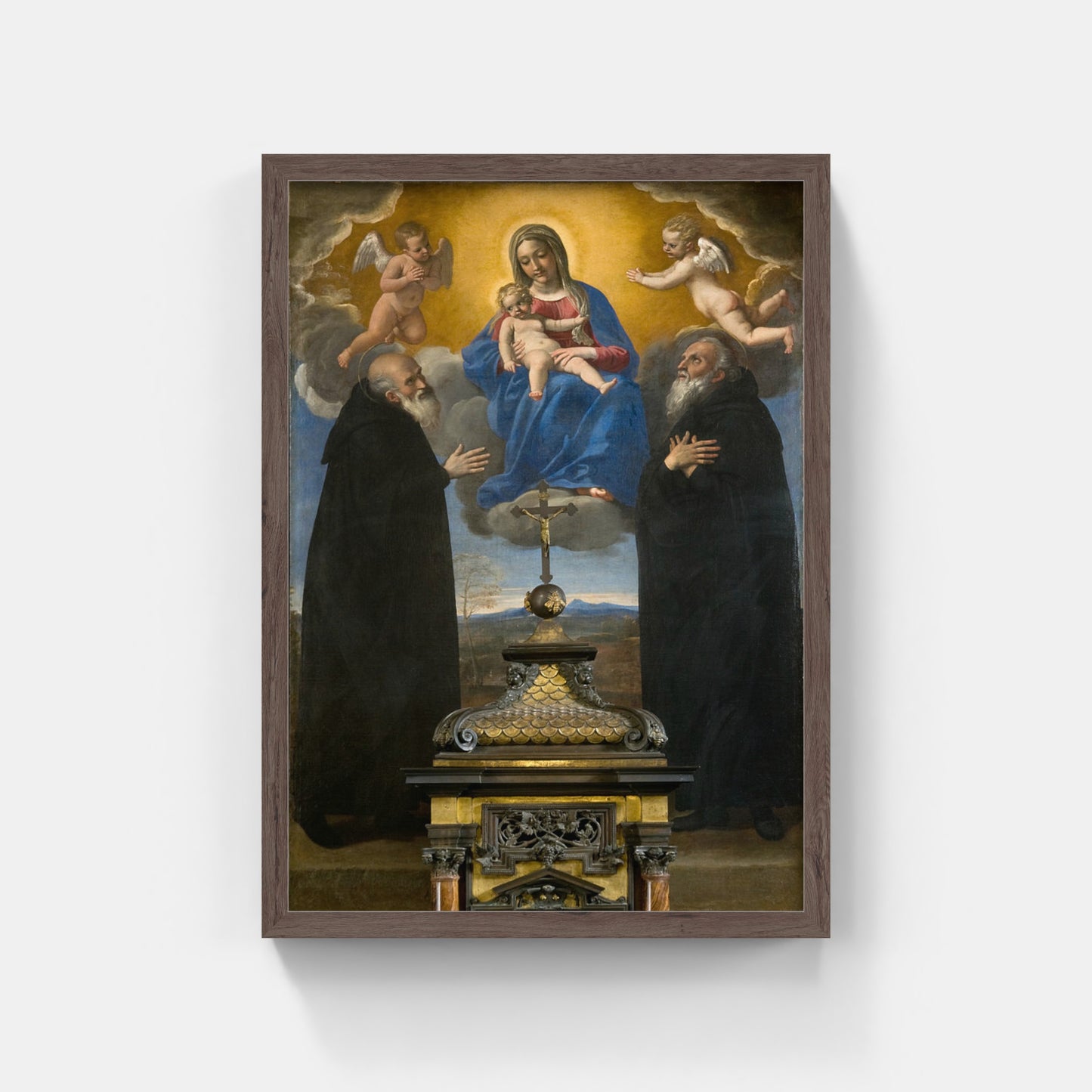
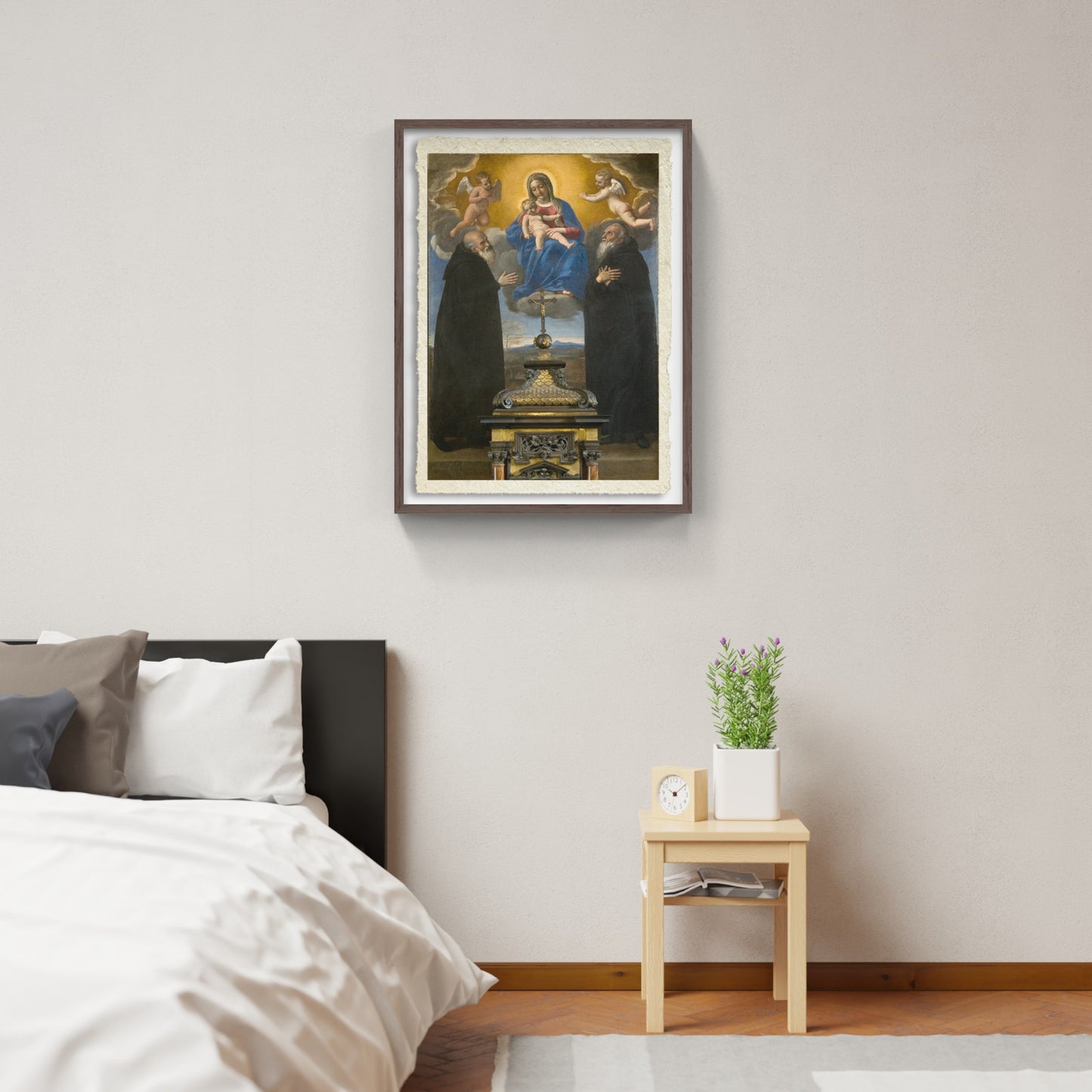
Scopri i pregiati materiali di Trizio Editore
Carta di Amalfi fatta a mano, cornice in legno di faggio e vetro museale. Guarda i particolari dei prodotti che renderanno la tua casa più elegante e preziosa.



